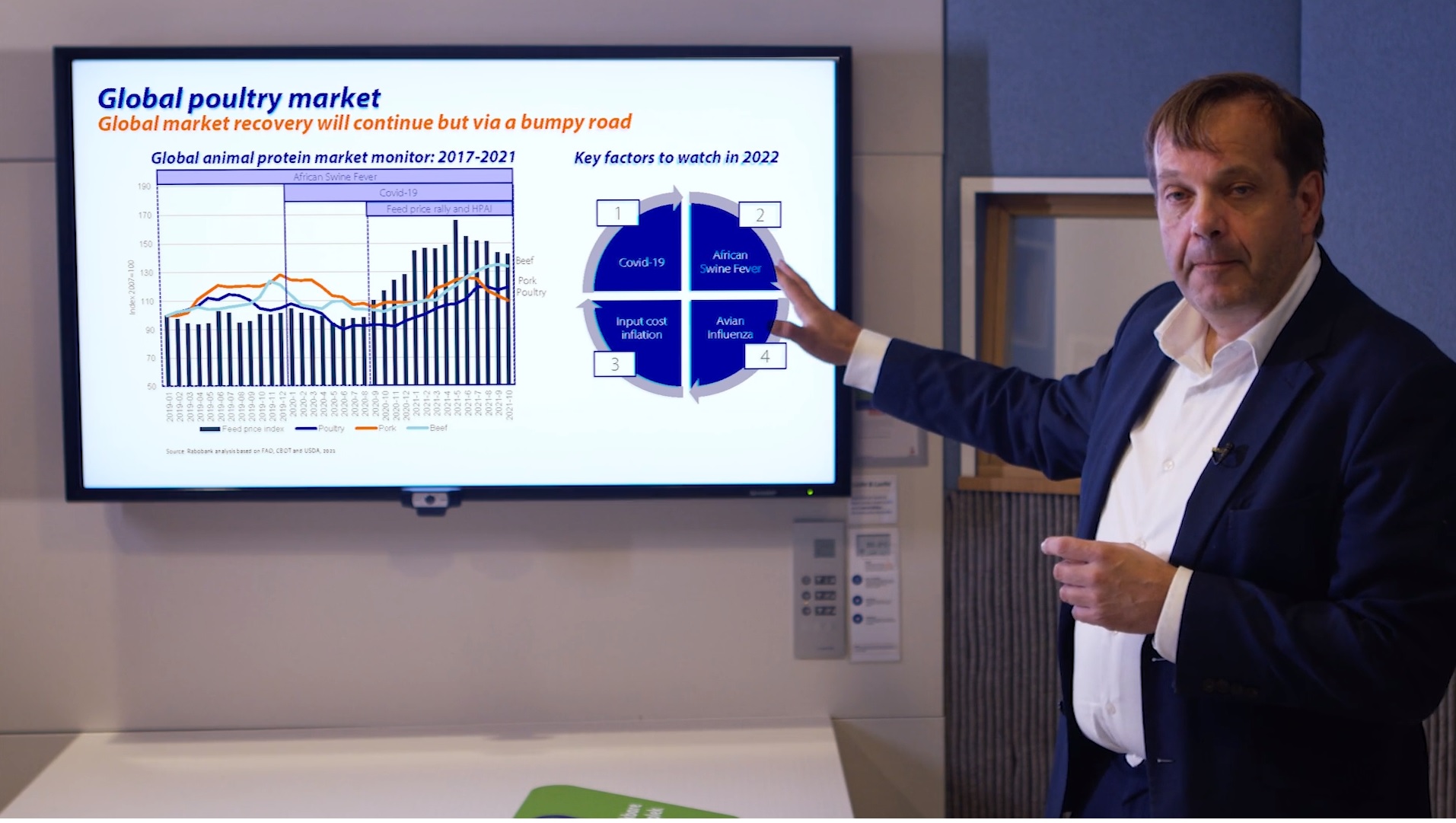Costs and inflation
Feed prices largely influence the global prices for meat; they are the main cost driver for the poultry industry. The feed price development since Q3 2020 shows a steep increase. But cost price inflation is not just about feed, it's also about labor cost, energy prices, freight cost and logistical issues.
Such rising costs create pressure along the entire poultry supply chain. Will food price inflation compensate for rising production costs? It is hard to predict if most cost pressures will be materially alleviated in 2022. There will be important regional variations.
On the cost side, Nan-Dirk Mulder has some good advice for the poultry industry, "The rising costs of labor, freight, energy and feed will continue to challenge the animal protein supply chain. So you have to keep control of the cost side at the moment. If you have an efficient business model in your operations, in your farms, in your processing plants, it will pay off eventually. In times of high cost and inflation, the most efficient ones will always benefit more than others."
Rising costs and inflation are deterring consumers too, with a higher impact for foodservice than retail. Consumers are still uncomfortable with on-premises dining, resulting in commercial restaurant traffic remaining down. Therefore, the foodservice sector, although recovering, will keep facing several headwinds.


